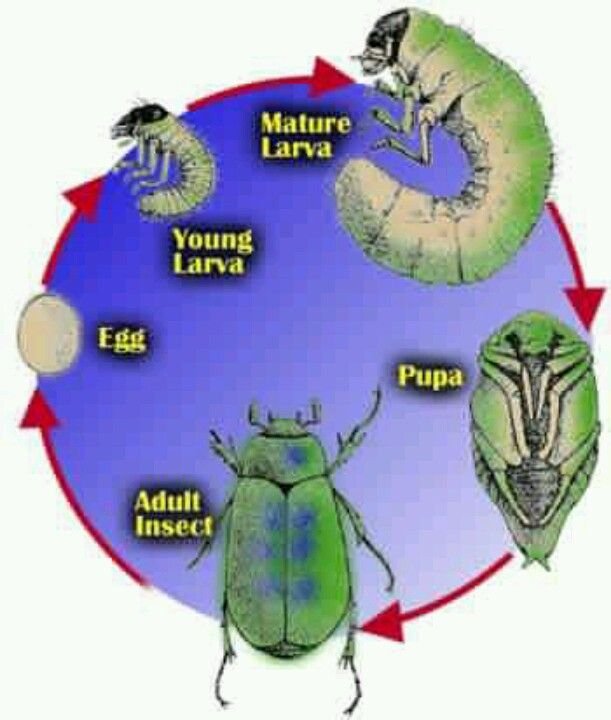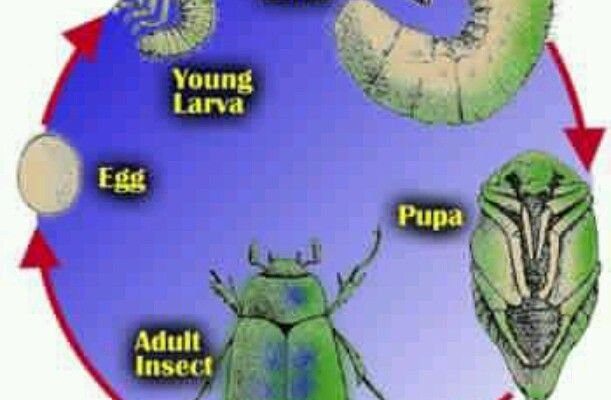
So, what exactly is a grub? In simple terms, a grub is the larval stage of certain beetles, like the Japanese beetle or the June beetle. They spend a significant part of their lives underground, munching on roots and organic material. But don’t let their humble beginnings fool you; these little critters undergo some dramatic changes. Let me explain how they make this journey from egg to beetle.
What Are Grubs?
Grubs are the larvae of various beetles and can be found in gardens, lawns, and even agricultural fields. Typically, they have a soft, C-shaped body that is usually white to off-white in color. Their heads are brown or dark in color, making them easily recognizable. When grubs hatch from their eggs, they set off on an important quest—to grow, develop, and eventually metamorphose into adult beetles.
You might be wondering why these little guys matter. Well, for one, they play a critical role in the ecosystem. As they feed on decaying organic matter and plant roots, they help break down nutrients in the soil. That’s a big win for any garden enthusiast! However, they can also become a nuisance if they munch away at your precious plants.
Grubs help aerate the soil as well, making it easier for water and nutrients to reach plant roots. Who knew that a worm-like creature could hold such importance in nature’s big picture?
The Egg Stage
The lifecycle of the grub begins with the egg stage. Adult beetles lay eggs in moist soil during the summer months. These eggs are usually small and white, and they blend in well with their surroundings, making them hard to spot. Depending on the species, a female beetle can lay dozens to hundreds of eggs, which is quite the family planning!
After a few weeks, these eggs hatch into tiny grubs. The timing can vary based on environmental conditions, such as temperature and moisture in the soil. When the new grubs break free from their eggs, they’re eager to start their journey—just like any baby animal!
During this stage, they’re incredibly vulnerable. Predators like birds and other insects see them as a tasty snack. The survival rate can be low, but those who make it past this stage have the potential for quite the transformation ahead.
The Larval Stage
Once the eggs hatch, the grubs enter the larval stage. This is where the excitement really begins! Grubs typically spend about three to four months in this phase, depending on the species and environmental conditions. They tunnel through the soil, consuming roots, decaying leaves, and organic matter.
As they munch away, grubs go through several molts, shedding their skin to accommodate their growing bodies. This is similar to how a child outgrows their clothes, right? Each time they shed, they become a little bigger and a little more robust.
This stage is critical for their development. The more they feed, the stronger they become. It’s also when they build up energy reserves to carry them through the next phases. Think of it as the grub’s version of a “power-up” before it takes on the world!
The Prep for Transformation
After the larval stage, grubs prepare for a big change. This is when they enter the pupal stage, a very interesting part of their lifecycle. Before they pupate, they typically dig deeper into the soil to find a cozy spot. It’s like creating their own little cave where they can transform in peace.
During this period, grubs stop feeding and start to undergo some serious transformations taking place internally. This is where they gradually morph into beetles. How cool is that? They may look like they’re just hanging out, but what’s happening inside is quite extraordinary.
This stage can last anywhere from a few weeks to several months, depending on the environmental conditions. If it’s warm and moist, the process tends to speed up. Conversely, cooler temperatures can prolong the pupation. During this time, patience is key—not just for the grub but for anyone eager to see the next stage.
The Emergence of the Adult Beetle
Finally, the moment arrives! After weeks of preparation, the adult beetle emerges from its pupal shell. At this point, it’s usually soft and pale, but don’t worry—it’ll soon darken and harden into its final form. It’s as if the grub has worked hard to remove its old skin and step out into the world, ready for its new life.
Adult beetles venture out to find food and reproduce, continuing the lifecycle. You might spot them in your garden or yard, munching on leaves and sometimes becoming a bit of a pest. Adult beetles can live for several months, further extending their impact on the garden ecosystem.
This stage wraps up the lifecycle of the grub, but the story doesn’t quite end here. Each adult beetle will lay eggs, ensuring the cycle continues. It’s a remarkable journey, don’t you think?
Environmental Factors Affecting the Lifecycle
Now that you’ve got the lifecycle down, let’s chat about what affects this process. Various environmental factors play a significant role in how well grubs thrive.
- Temperature: Grubs prefer warm soil. Typically, they do well in temperatures between 70°F to 90°F (21°C to 32°C). Cooler weather can slow their development.
- Moisture: Moist soil is crucial for egg-laying. Drier conditions can deter adult beetles from laying eggs and may lead to a lower survival rate for grubs.
- Soil Type: Loamy, well-aerated soil is ideal for grubs. Compacted or poorly drained soils can affect their growth and development.
Understanding these factors can help gardeners manage grub populations more effectively. If you can create an environment that is less friendly for grubs, you’ll have a healthier garden. Even small changes can make a significant difference!
Managing Grub Populations in Your Garden
So, what if you find that grubs have invaded your garden? No need to panic! There are several ways to manage their population without resorting to harsh chemicals.
– **Natural Predators:** Encourage birds, beneficial nematodes, or even certain insects that will feast on grubs. Nature often has its own built-in pest control.
– **Diverse Planting:** Planting a variety of species can confuse beetles and reduce their impact. A diverse garden is often a healthier garden!
– **Soil Health:** Keep your soil healthy through regular composting and mulching. This can help naturally deter grubs and improve overall plant health.
Keep an eye on your plants and soil health, and you’ll have a fighting chance against pesky grubs!
In summary, the journey from egg to beetle is a fascinating process that speaks volumes about the wonders of nature. Grubs play their roles in the ecosystem, and understanding their lifecycle not only helps us appreciate them but also equips us with the knowledge to manage their presence effectively. So the next time you spot a beetle buzzing around, remember that it once started as a tiny egg buried in the soil. Nature truly is spectacular!

